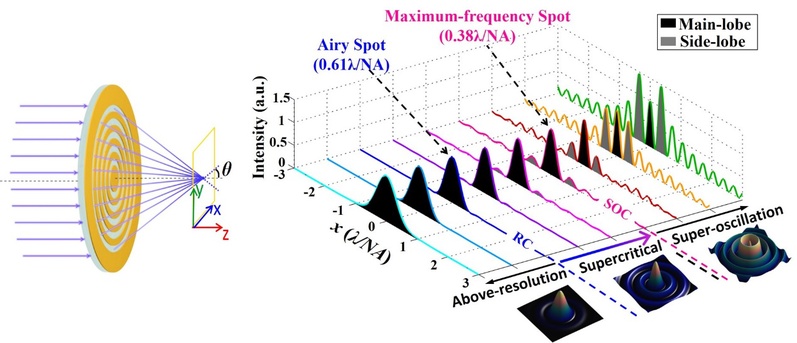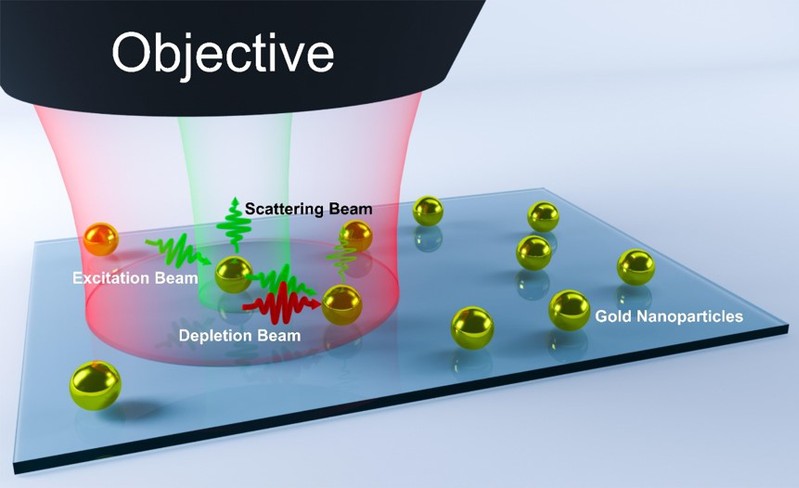It has been widely accepted that the spatial resolution of lens-based (far-field) optical microscopes is limited by the diffraction of light to several hundred nanometers.Recent years, to break the diffraction barrier, novel super-resolution techniques have emerged as a research frontier. Breaking the diffraction limit and thus improving the resolution of a far-field optical microscope to the order of sub-50 nm is the motivation of this research. In general, the point spread function (PSF) describes the imaging system response to a point input, therefore, improving the resolution is equivalent to decreasing the spatial extent of the PSF. Our approaches are intensely focused on engineering PSF of an imaging system through innovative nanophotonic techniques such as structured beams, superoscillatory lens, stimulated emission depletion microscopy (STED) -inspired means and so on.
Through manipulating diffraction of light with binary masks or gradient metasurfaces, some miniaturized and planar lenses have been reported with intriguing functionalities, especially for the modulation of the PSF of an imaging system. Thus, creating high spatial frequency or even superoscillatory components could be achieved in the focal region, which provides a viable solution for the label-free super-resolution optical imaging.
On the other hand, the concept of STED can be generalized to encompass any reversible saturable optical transition, including nonfluorescent ones, such as a transient saturated population of the molecular triplet state, saturated transient absorption, saturated plasmonic scattering, or in fact any reversible photoinduced transition between two states. Utilizing various nonlinear perceptions of light-matter interactions spurs the research into STED-inspired superresolution imaging techniques beyond sub-50 nm resolution.

